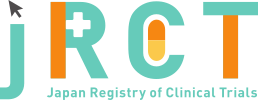臨床研究等提出・公開システム
|
Nov. 27, 2021 |
|
|
Sept. 30, 2023 |
|
|
jRCT1060210053 |
Examination of the usefulness of a health guidance purogram for diabetic patients with obesity:Pirot study |
|
SACCT-DM |
|
Sept. 30, 2023 |
|
10 |
|
Subjects are type 2 diabetes patients aged 20 or over with HbA1c: 6.5% or more and less than 10%, and BMI: 25 or more and less than 35. The subjects were 7 males and 3 females, with an average age of 59.4 years, an average disease history of 19.5 years, and an average BMI of 28.8. |
|
This study was proceeded without any problems. |
|
Nothing to mention |
|
Of the 10 patients who underwent the program, the primary endpoint, Patient Satisfaction Factor 1 (higher scores indicate higher satisfaction), increased in 6 patients and decreased in 4 patients. On the stress scale, which is a secondary endpoint (higher scores indicate a stronger tendency to avoid experiences and are said to interfere with desired behavior), the score increased in 5 patients, decreased in 4 patients, and remained unchanged in 1 patient. |
|
The hypothesis that both patient satisfaction factor 1 and stress scale improved after intervention did not hold. On the other hand, an average of 80% of action goals were put into practice, which was useful in this respect. In addition, both patients and supporters commented that it was useful for self-management, increased communication, and built a relationship of trust. This suggested the usefulness of the non-numerical part. |
|
No |
|
https://jrct.mhlw.go.jp/latest-detail/jRCT1060210053 |
Shikata Kenichi |
||
Okayama University Hospital |
||
2-5-1 Shikata-cho,Kita-ku,okayama,Japan |
||
+81-86-235-6508 |
||
shikata@md.okayama-u.ac.jp |
||
Takatori Sachiko |
||
Okayama University Hospital |
||
2-5-1 Shikata-cho,Kita-ku,okayama,Japan |
||
+81-86-235-7209 |
||
takato-s@okayama-u.ac.jp |
Complete |
Nov. 27, 2021 |
||
| Jan. 05, 2022 | ||
| 12 | ||
Interventional |
||
single arm study |
||
open(masking not used) |
||
uncontrolled control |
||
single assignment |
||
health services research |
||
The patient meets all three criteria. |
||
Patients who fall under any of the four are excluded. |
||
| 20age old over | ||
| No limit | ||
Both |
||
Type 2 diabetes |
||
Patients self learn using the Health Guidance Program(SACCT Diabetes). Medical staff guide and encourage patients in multiple occupations on the occasion of consultation. In addition, when the patient sees a doctor, |
||
Type 2 diabetes |
||
Before and after the program, a questionnaire to measure patient satisfaction will be conducted and scored for evaluation. The patient satisfaction survey uses the Diabetes Treatment Satisfaction Questionnaire (DTSQ) verified by Ishii et al. |
||
(1) Conduct a questionnaire to measure stress coping ability (psychological flexibility) before and after the program, and evaluate it by scoring it. To evaluate stress coping ability (psychological flexibility), we use a scale (Japanese version of Acceptance and Action Questionnaire-II (7 item version)) that measures avoidance of experiences verified by Shima et al. |
||
| Kenichi Shikata |
| Okayama University Clinical Research Committee | |
| 2-5-1 Shikata-cho,Kita-ku,Okayama,Japan, Okayama | |
+81-86-235-7133 |
|
| ouh-crrb@adm.okayama-u.ac.jp | |
| Approval | |
Oct. 26, 2021 |
none |
